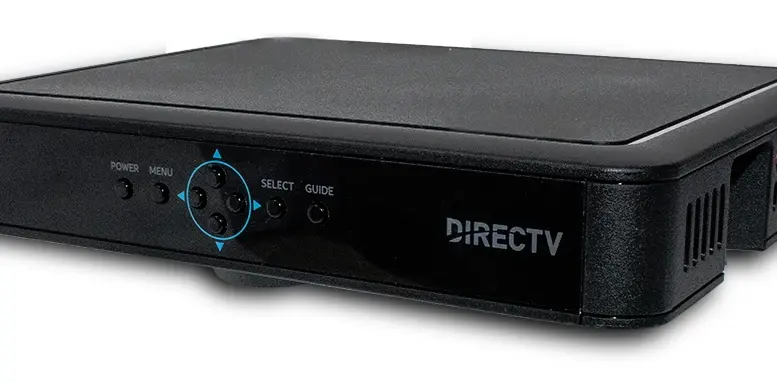Last year, DIRECTV released the H26K Commercial Receiver. It’s not only the first receiver specifically designed for commercial use, it’s also the company’s first new receiver of any kind in a decade. It’s stuffed with the features business customers want, like real buttons on the front panel, maximum energy efficiency, and of course it does the fancy stuff like 4K and Dolby Audio. Because it’s designed from the ground up for commercial use, it’s easier to network and it’s easier to control things like the screen saver and power saver modes. Those two have been a problem in the past for users of the H24 and H25 series.
However, some installers are finding that when they put in an H26K to replace an existing H25, the receiver will work for a couple of seconds then the screen will go black. There’s a simple explanation for this, and luckily there’s a simple fix.
Why this happens
What’s happening here is that HD Content Protection is kicking in. HDCP is part of the HDMI standard. It’s designed to stop you from making unlimited digital copies of whatever you’re receiving. It’s been around since the beginning, but since it keeps getting hacked, newer versions keep coming out.
DIRECTV H24 and H25 used a much earlier version of the HDMI standard. This carried with it some fairly simple content protection. However, since the H26K is a 4K receiver, it uses HDMI 2.0 which enables HDR and Dolby Atmos. It also means that HDCP 2.2 is enabled, and it’s the strictest form of content protection yet.
Roughly every two seconds, the DIRECTV box sends a signal to the TV asking to know more about it. If it doesn’t get an answer or doesn’t like the answer, it just shuts down video. It’s as simple as that. That’s what you’re seeing.
It happens more often on H26K boxes because of that stricter content protection. Unfortunately there’s no way to have an H26K without that built in.
When this is most likely to happen
There are three cases when you’ll likely encounter black screen issues:
Using matrix switches
If you have a matrix switch between the receiver and the TV, it may not be telling the receiver what it wants to know. Usually this can be solved if your matrix switch supports EDID management. EDID management lets you set the switch up to provide that information to the receiver properly. If your current matrix switch doesn’t support that, consider a new Wolfpack switch from Solid Signal.
Using HDMI-to-Ethernet baluns
It’s become common in sports bars to use devices that let you change your HDMI cable into something compatible with Ethernet cable. These devices are called baluns (although that’s not a technically accurate description of what they do.) Older baluns, or those not specifically designed to work with HDCP 2.2, are a big cause of this problem. At this time, I don’t know of a reliable source of baluns that actually work, unfortunately. One reliable option is to use an Optical HDMI cable for runs up to 200 feet. They’re expensive, but you eliminate that sort of problem.
Using older TVs
If your TV is more than four or five years old, it definitely doesn’t support the kind of content protection the H26K needs. Even some new TVs don’t support it. You can look at the specs for your TV and see if it supports HDMI 2.0 and HDCP 2.2. In some cases only one input will support that, and in other cases you’ll have to replace the TV.
Here’s a good temporary solution (that might even become your permanent solution)
HD Content Protection isn’t applied to standard definition signals at all. That means if you output 480i, these issues will go away. Although you can’t use the menus to set your H26K to standard definition, there’s a hidden way to do it.

Every H26K comes with a Genie remote like this one. If you’ve lost yours, you can get a replacement here. You can use this remote’s secret key combination to set the receiver to standard definition, which will stop all your black screen problems. Here are the steps you need to take.
- Make sure the remote is paired to the H26K. If there are no RF remotes, you can just hold down MUTE and ENTER until the lights flash. (More on that here.) You can also go into the menus using the front panel. The steps are:
- MENU
- arrow to SETTINGS then SELECT
- arrow to REMOTE CONTROL and press SELECT
- You will probably see IR/RF setup on that screen, if not, arrow to ADVANCED SETUP and press SELECT
- Press and hold the EXIT button on the remote. The display will change to 480i resolution.
- If you want to go back to HD, press and hold the EXIT button again.
Maybe standard definition is good enough
In a lot of commercial environments, the TVs are small enough, or you’re far away enough, that you barely notice the difference between standard definition and HD. There are various charts out there to back this up, I’m not sure which is the most accurate. I’ll say this from experience: If you have a 55″ TV and you’re 8 feet away, you won’t really see any difference between SD and 4K, except the menus. And let’s be honest, people don’t watch menus. They watch TV shows.
Because remember, standard definition over HDMI isn’t the same as watching it over old-style composite cables. You still get great color and widescreen picture, which are the two things that people really associate with HD.
If you do need to think about a permanent solution for 4K or HD on your H26K, and the solution you have isn’t working, call the experts at Signal Connect. We have experts who can help you build the ultimate DIRECTV solution. Call 888-233-7563 during East Coast business hours. If it’s after hours, fill out the form below. We’ll get right back to you!





